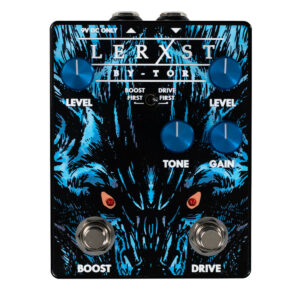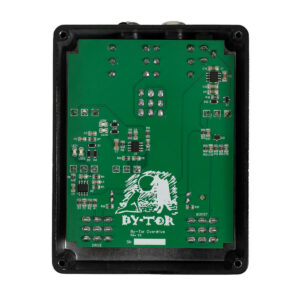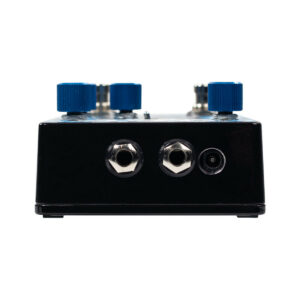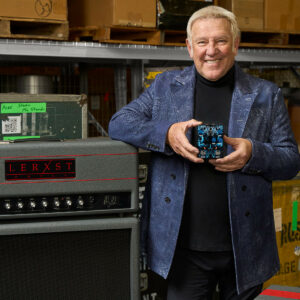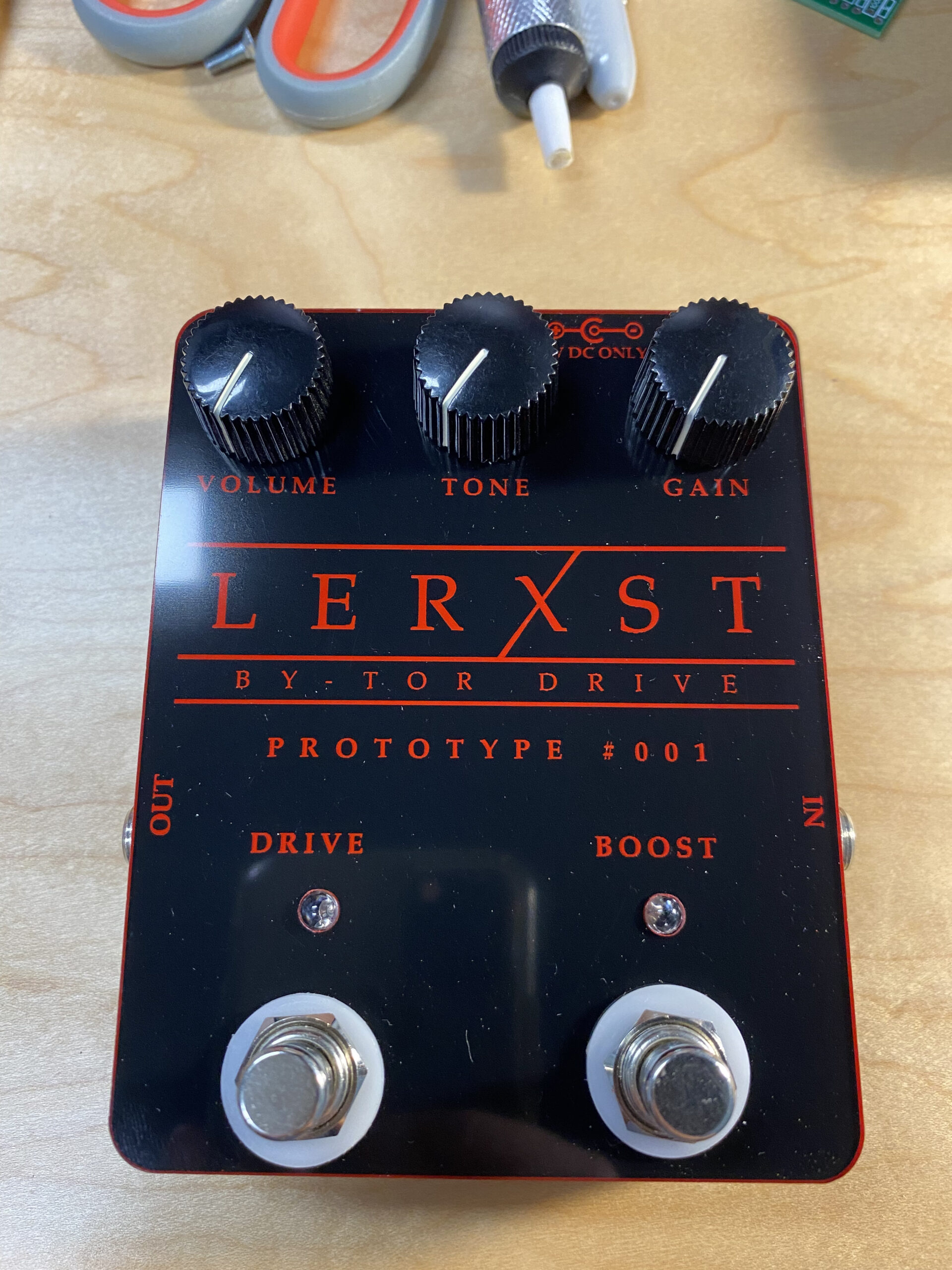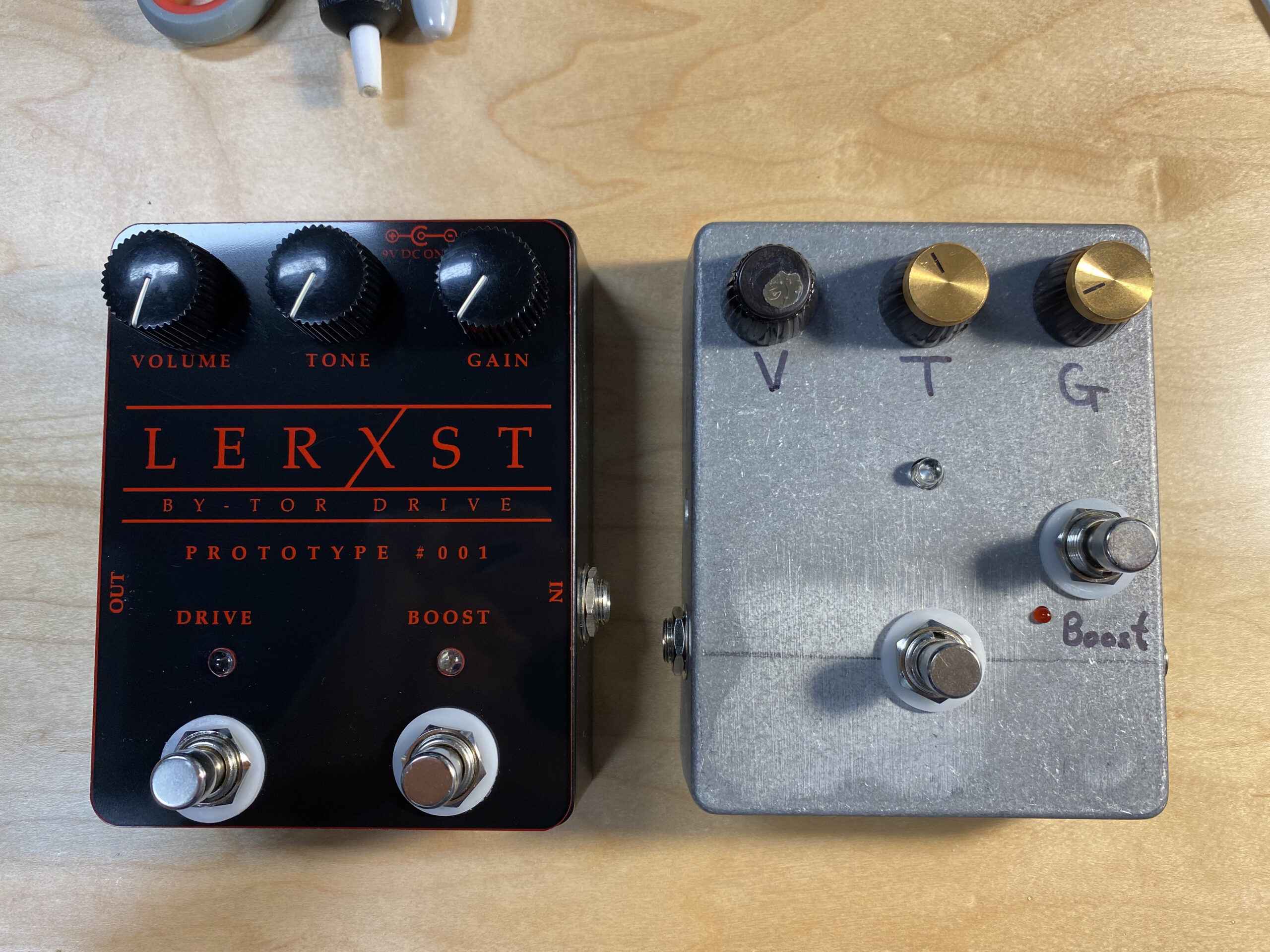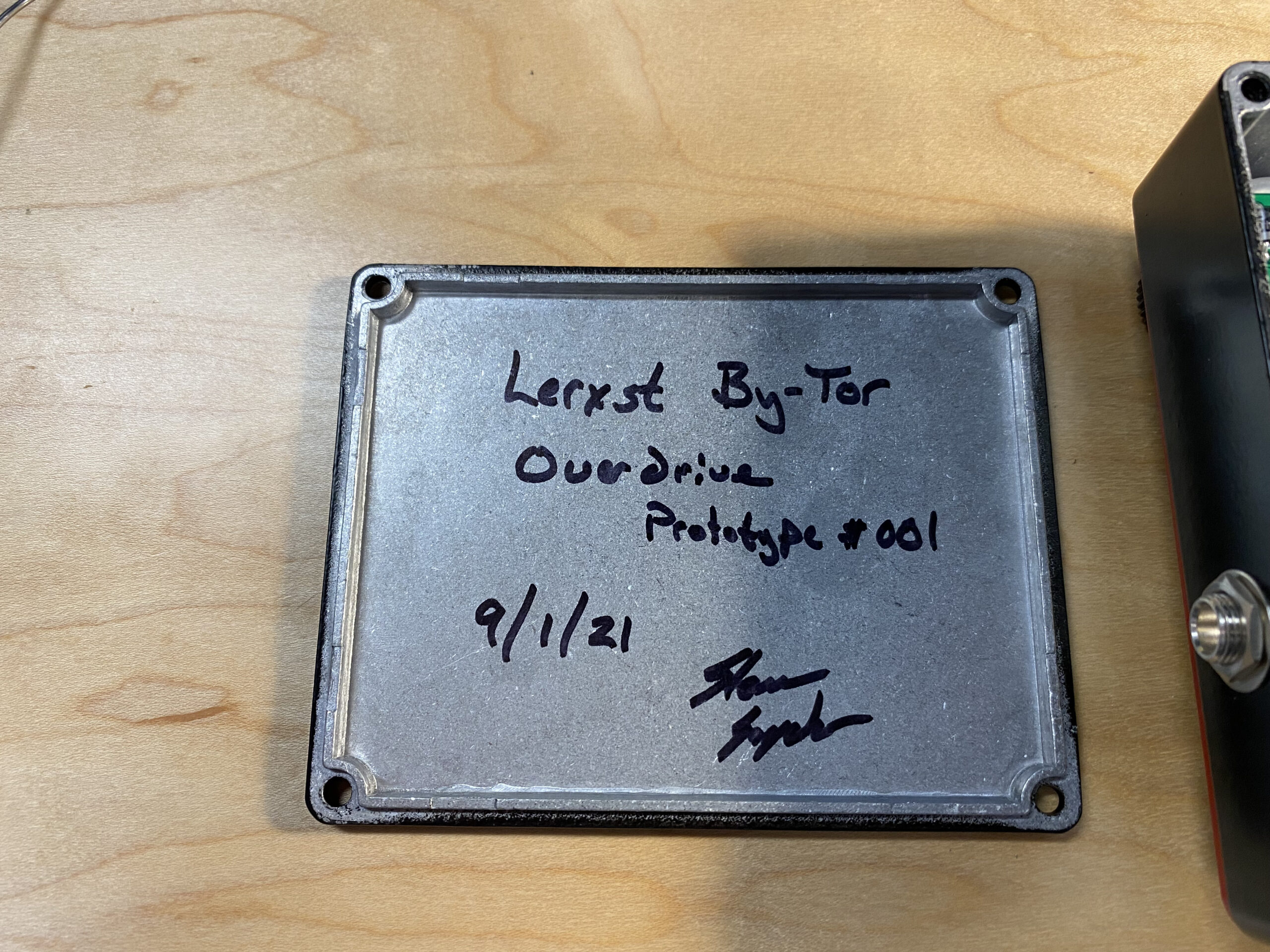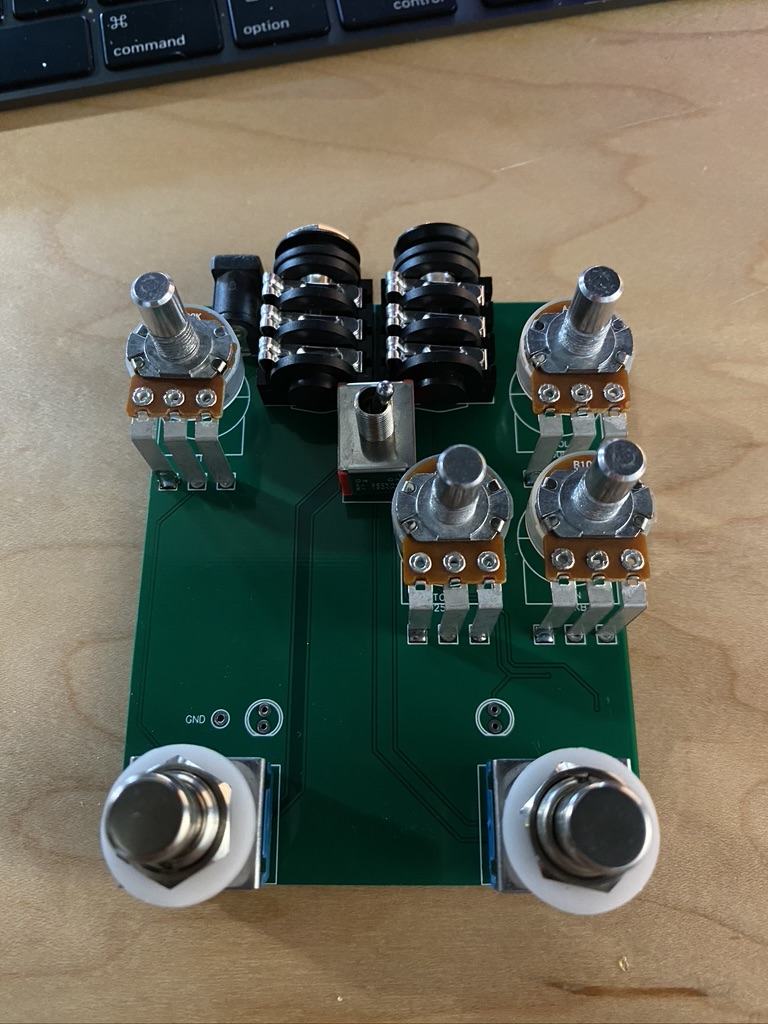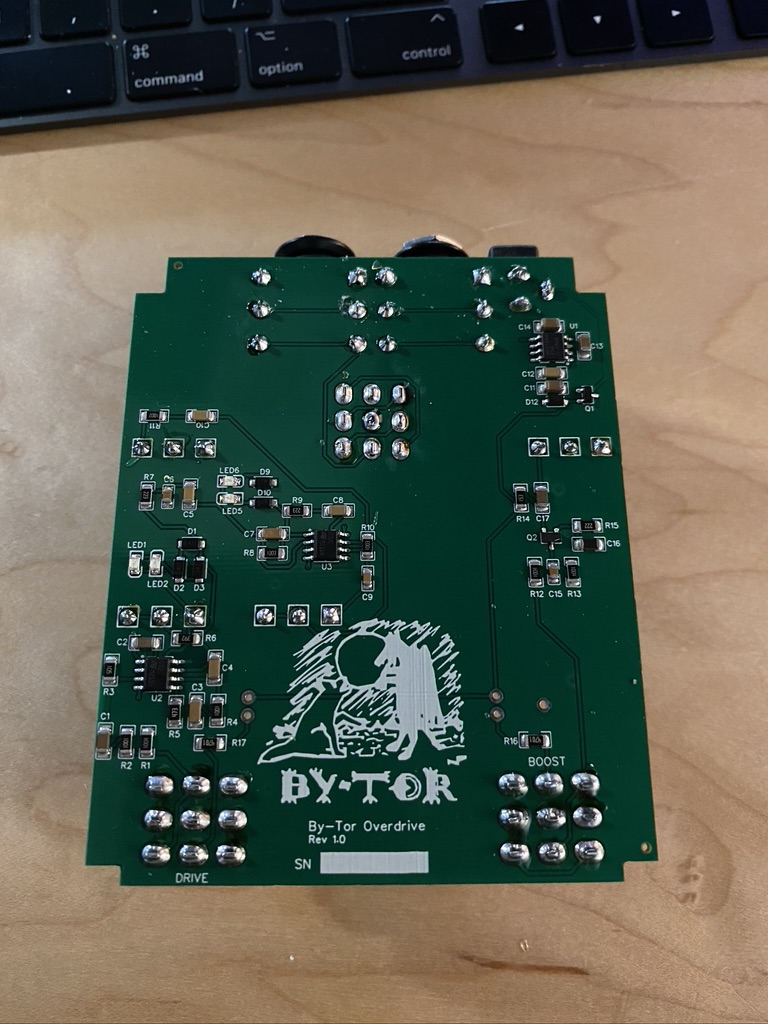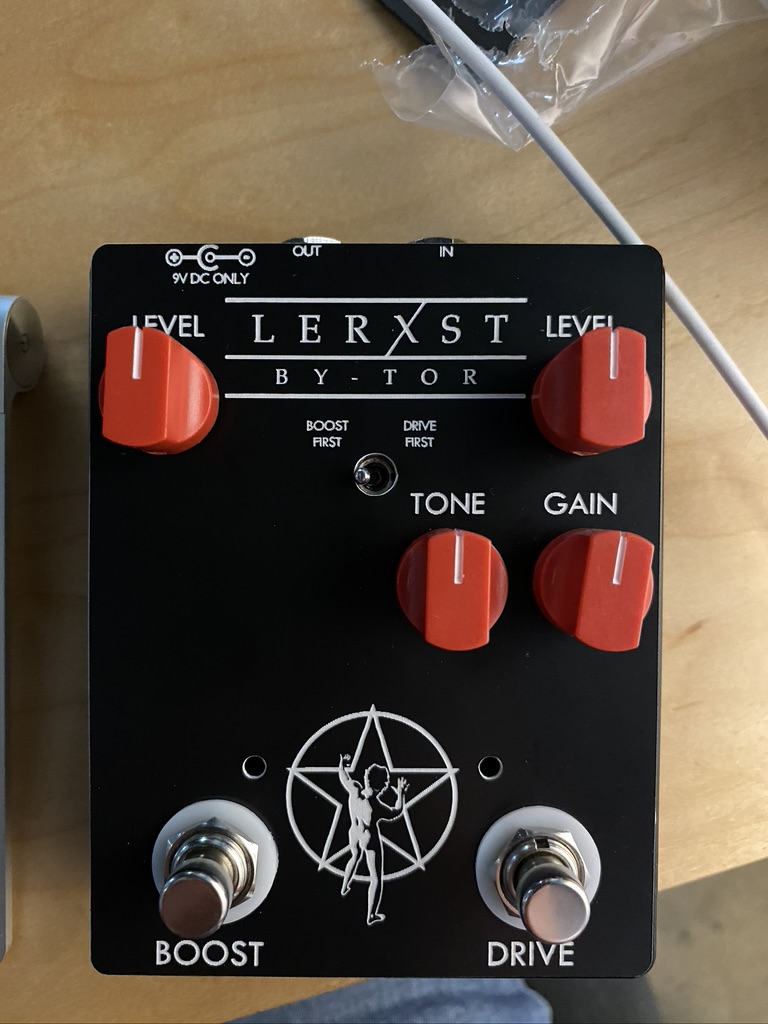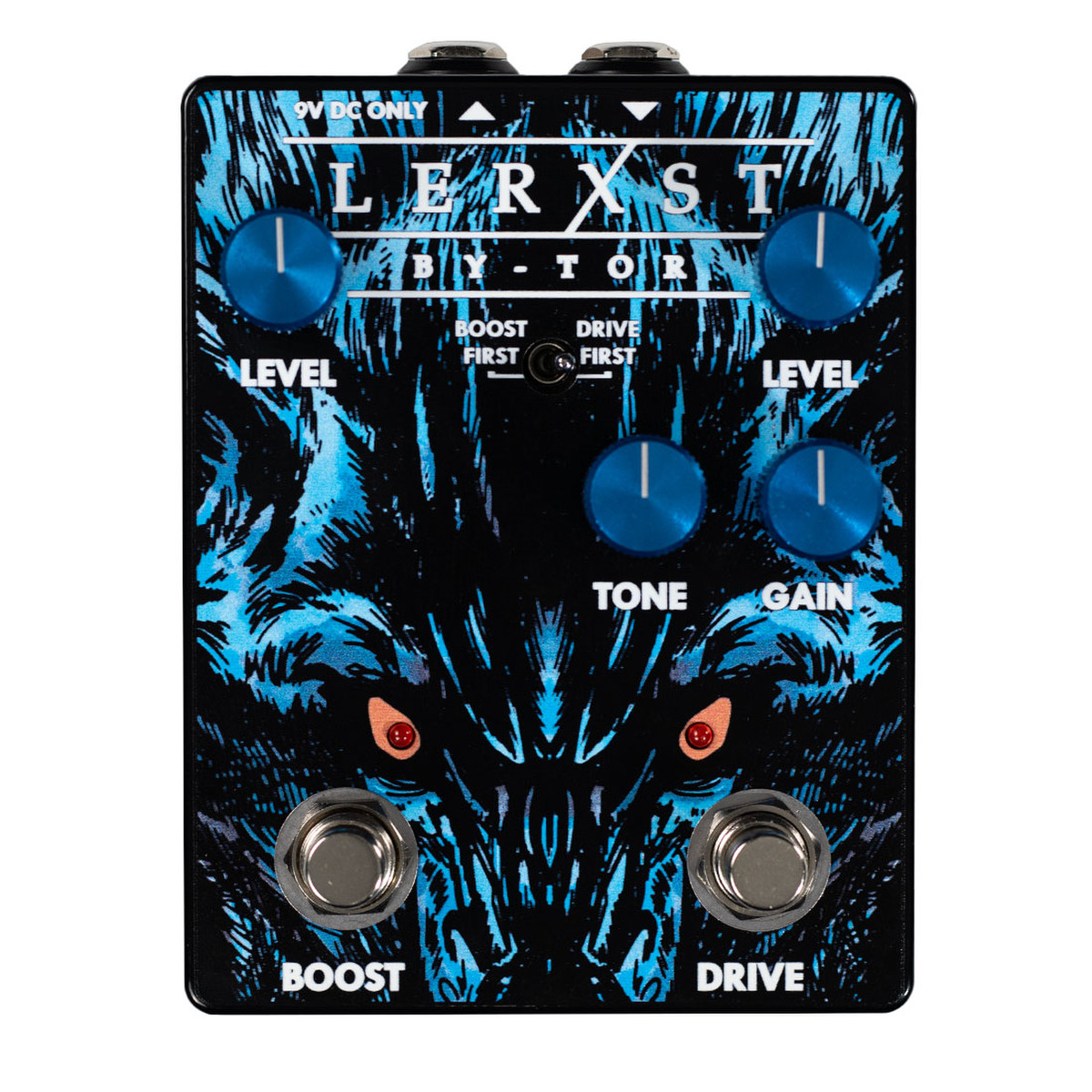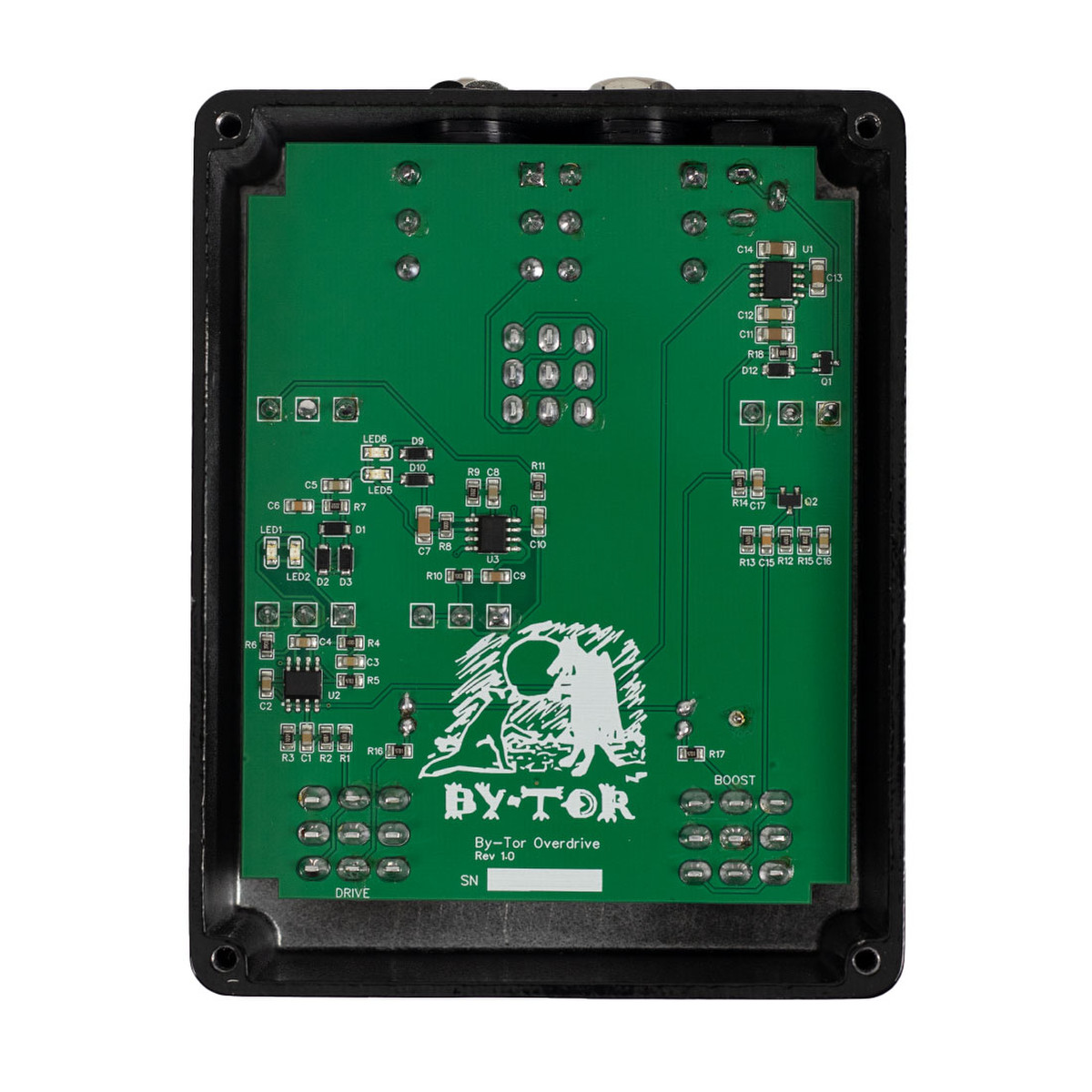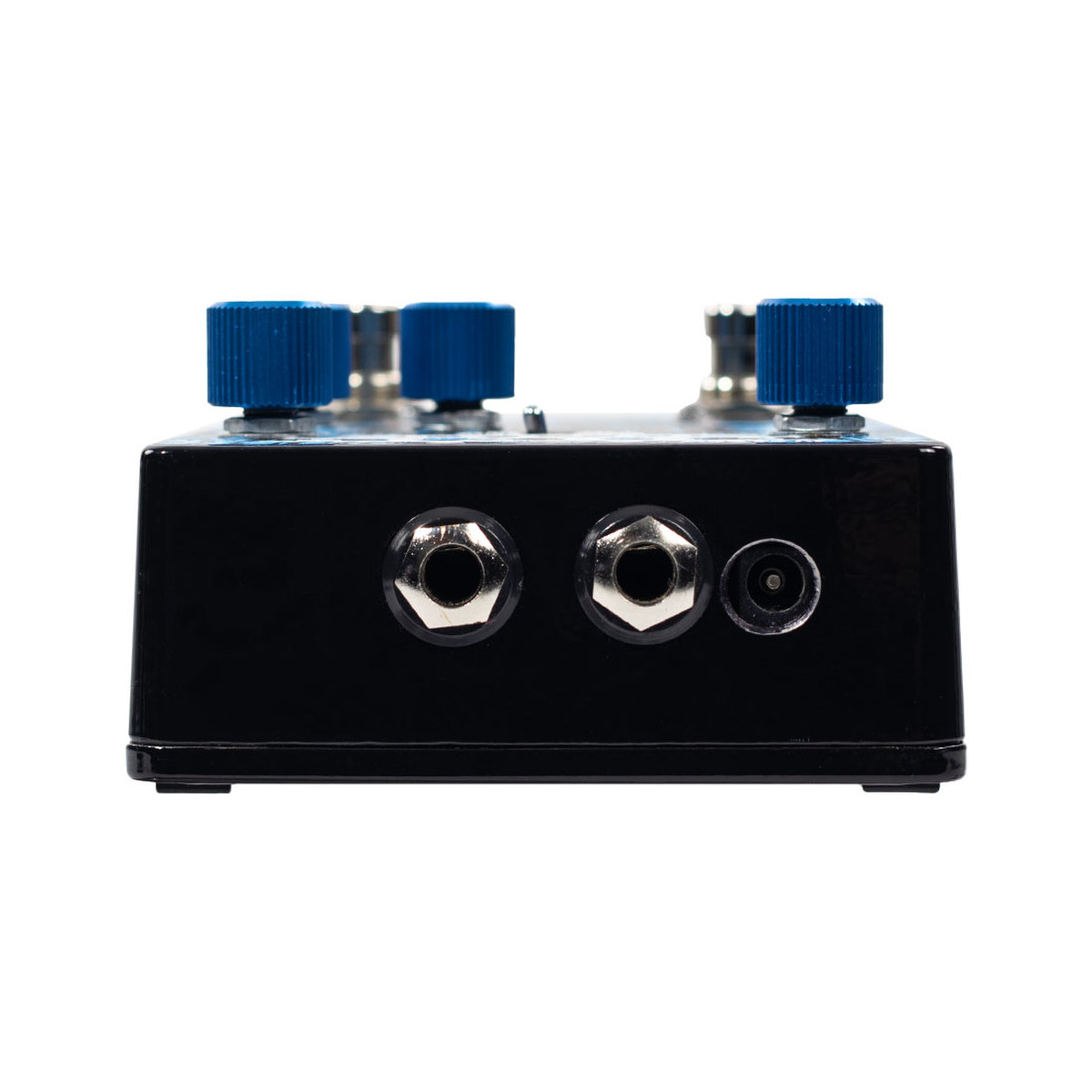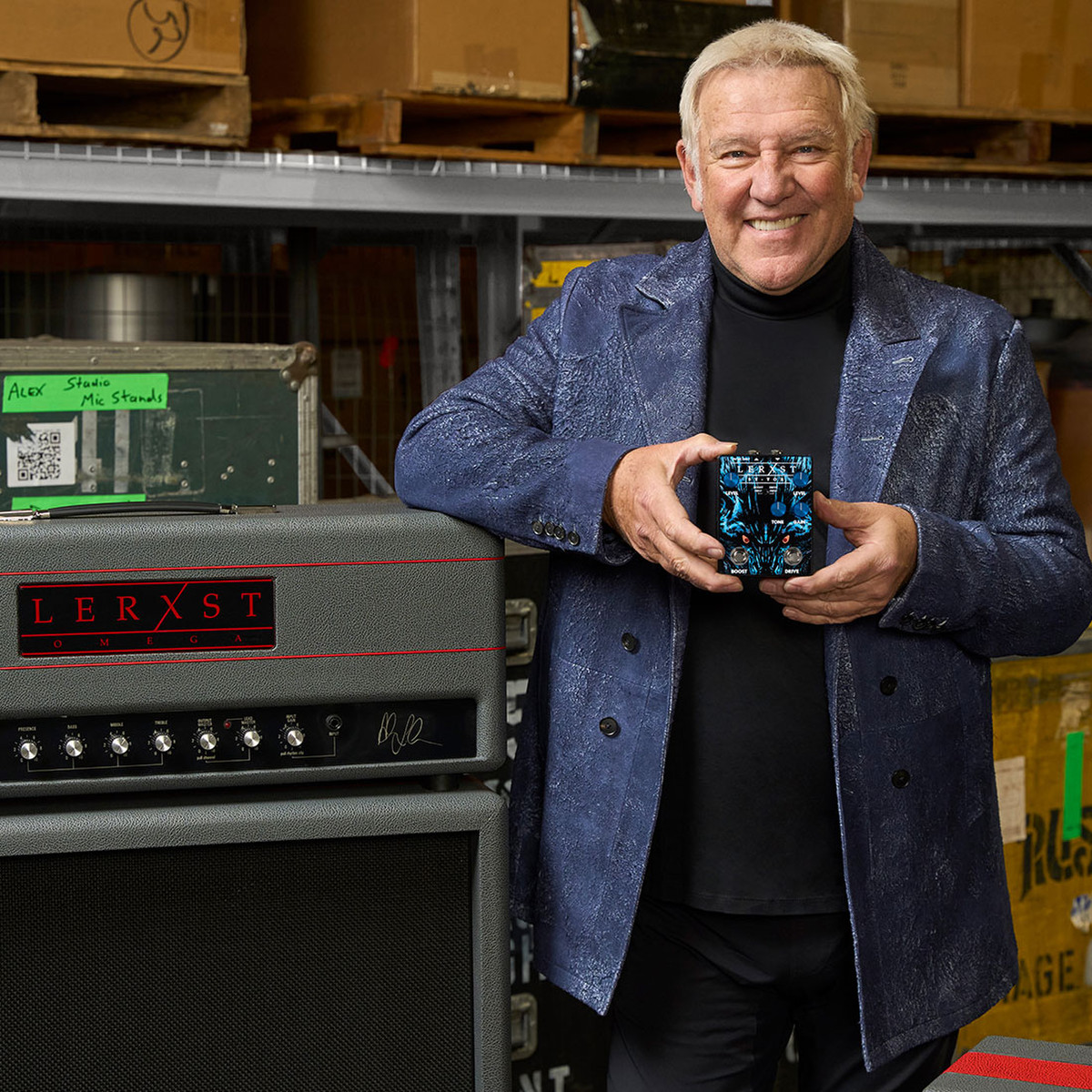After nothing came of the original two Lerxst pedals that I designed for Alex back when we were first building them at Mojotone, I kept tinkering with a circuit to capture that big roar of a cranked-up Marshall. About three years later, after tinkering here and there, I finally came up with a circuit that had “that sound.” I kept the design and the prototype to myself, just in case I ever decided to build my own pedals.
Lerxst Re-Launch
Fast forward a few years to when we were meeting about reviving the Lerxst amps, I brought up the idea of an Omega in a pedal. At first, they were resistant as Alex didn’t use pedals to get his sound. I pitched the idea of having a product that could get the sound of the big amps but be at a price point where the rest of the fans, who weren’t doctors and lawyers, could afford to buy something that represented one of their guitar heroes. It was finally approved to build out a prototype to send to Alex.
Prototype #001
I designed the first prototype boards and had them built using through-hole components in case I needed to make any tweaks to the circuit. I added a fixed boost circuit that came before the overdrive so that it could be used as a gain boost. The circuit was a very simple JFET gain stage with about 3-6dB of boost. Prototype #1 was sent off for Alex to check out.
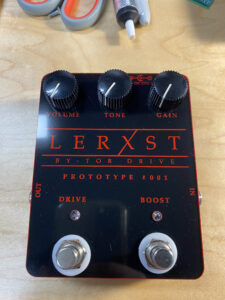
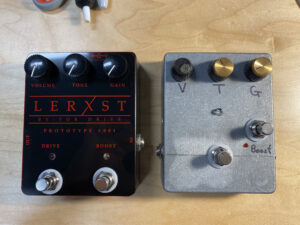
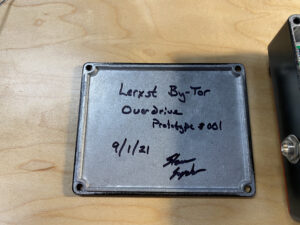
Revisions
He put the pedal through its paces and loved the sound and feel that he got from it. He appreciated being able to get the response of an amp and that it reacted great with the volume on his guitar. A few tweaks were made so that you could change the order of the effects and have a control for the boost volume.

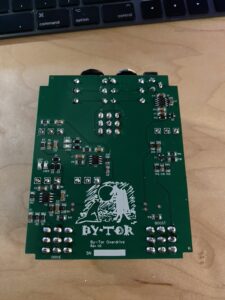
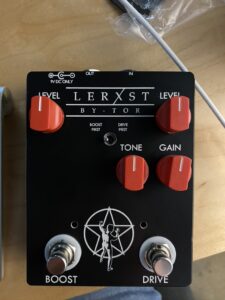
PCB Change and Final Layout
At this time, I wanted to try the same circuit made with surface-mount components to test against the version with through-hole components to see if there was any audible difference between the circuits. There has always been a lot of debate in the guitar world about surface-mount vs. through-hole and which “sounds” better. So the board was redesigned with the new surface-mount components, matching them to the through-hole component specs. I set up a blind test and had people play through the rig while I switched the circuits without them seeing. Needless to say, no one could tell the difference (thanks, Josh Scott, for the challenge).
The final layout for the pedal box was to go with a Hammond 1590BB2 box, where there was enough room for the two footswitches to be easily hit without having to tiptoe to toggle them. Next was to go with top-mounted jacks.
